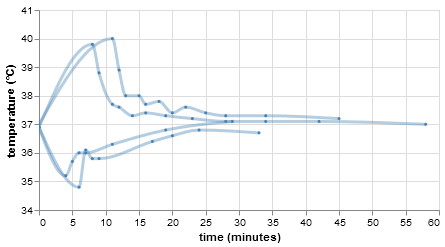Kinsa recommends waiting 15 minutes after eating or drinking before taking oral readings. To see for myself if that’s really necessary (or, sufficient), I took my temperature a few times after drinking hot tea, and after drinking ice water.

Looks like 15 minutes is good advice, but it can take up to an hour for everything to return to normal. Since I didn’t spit out my drinks, it’s possible that the changes that persist past the 15-minute mark do in fact reflect changes to my core temperature, rather than being measurement artifacts.